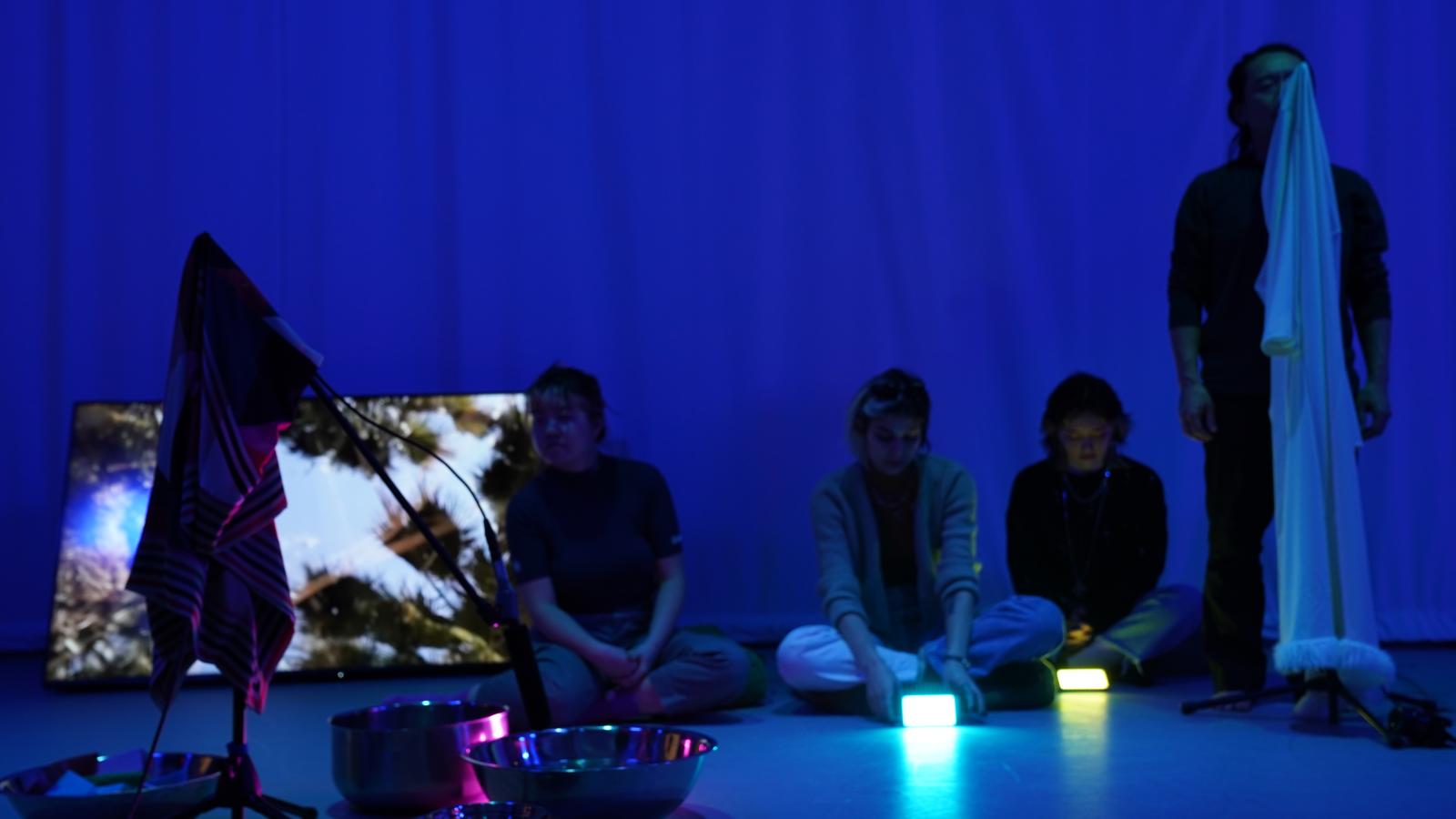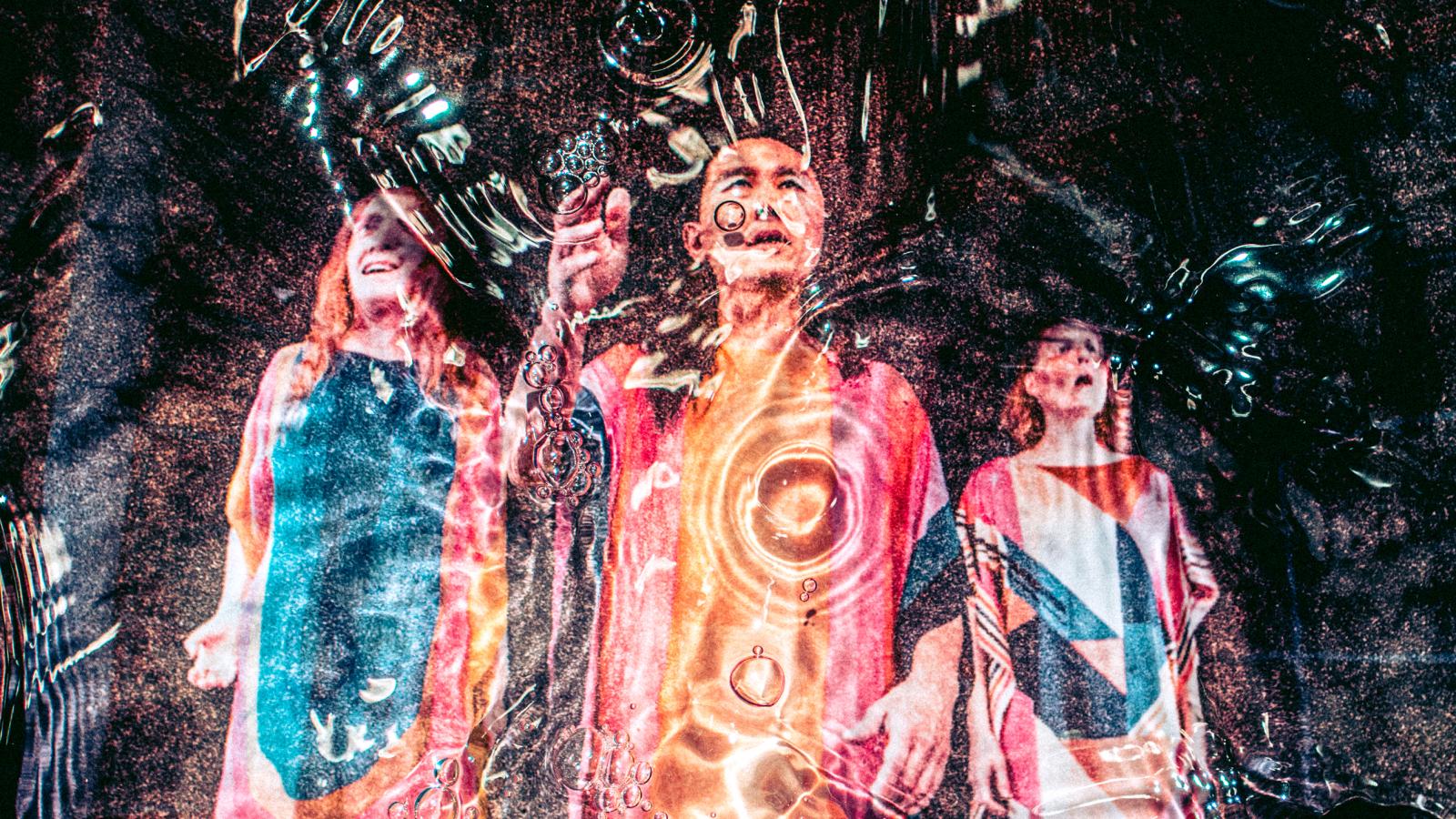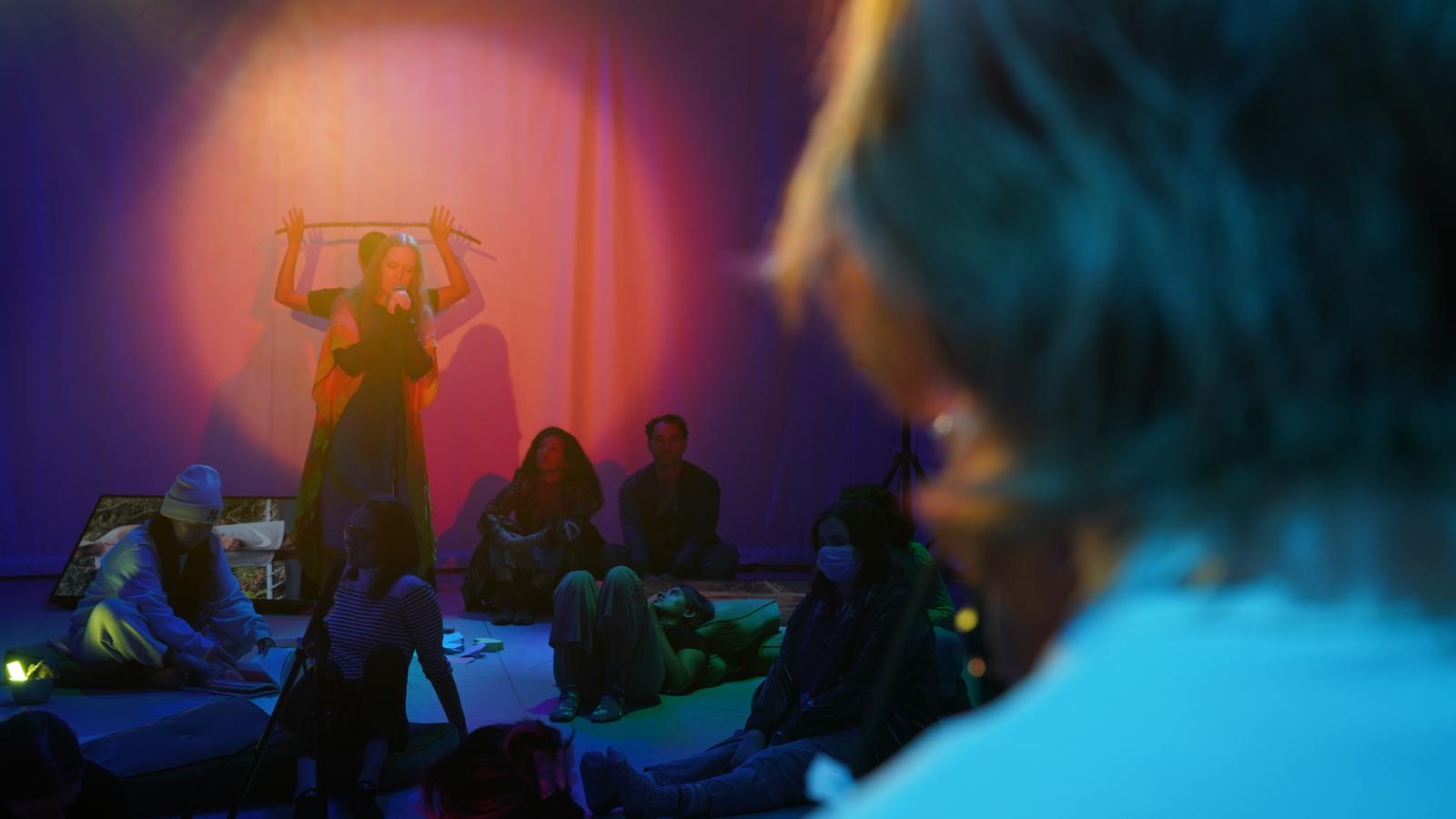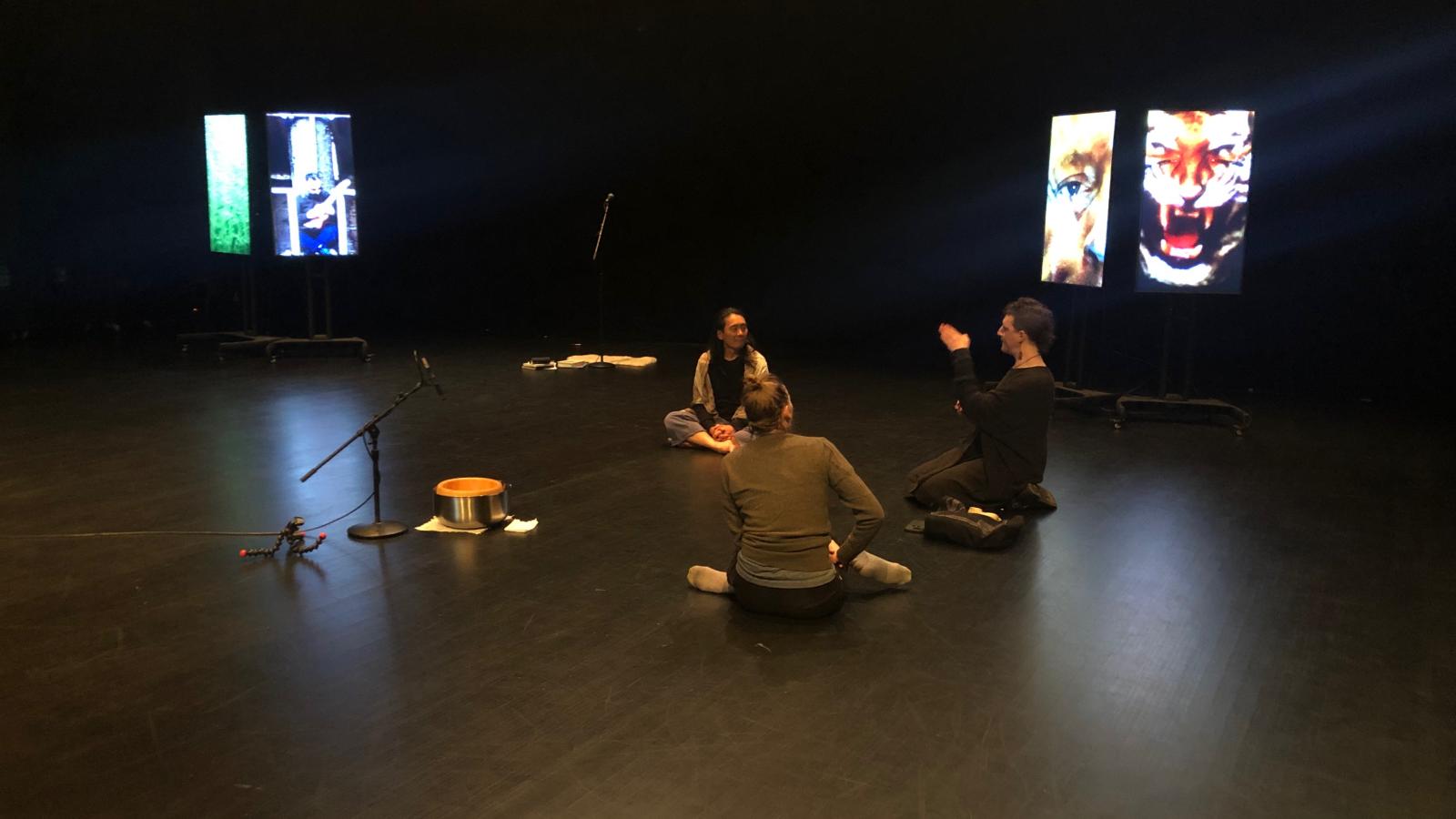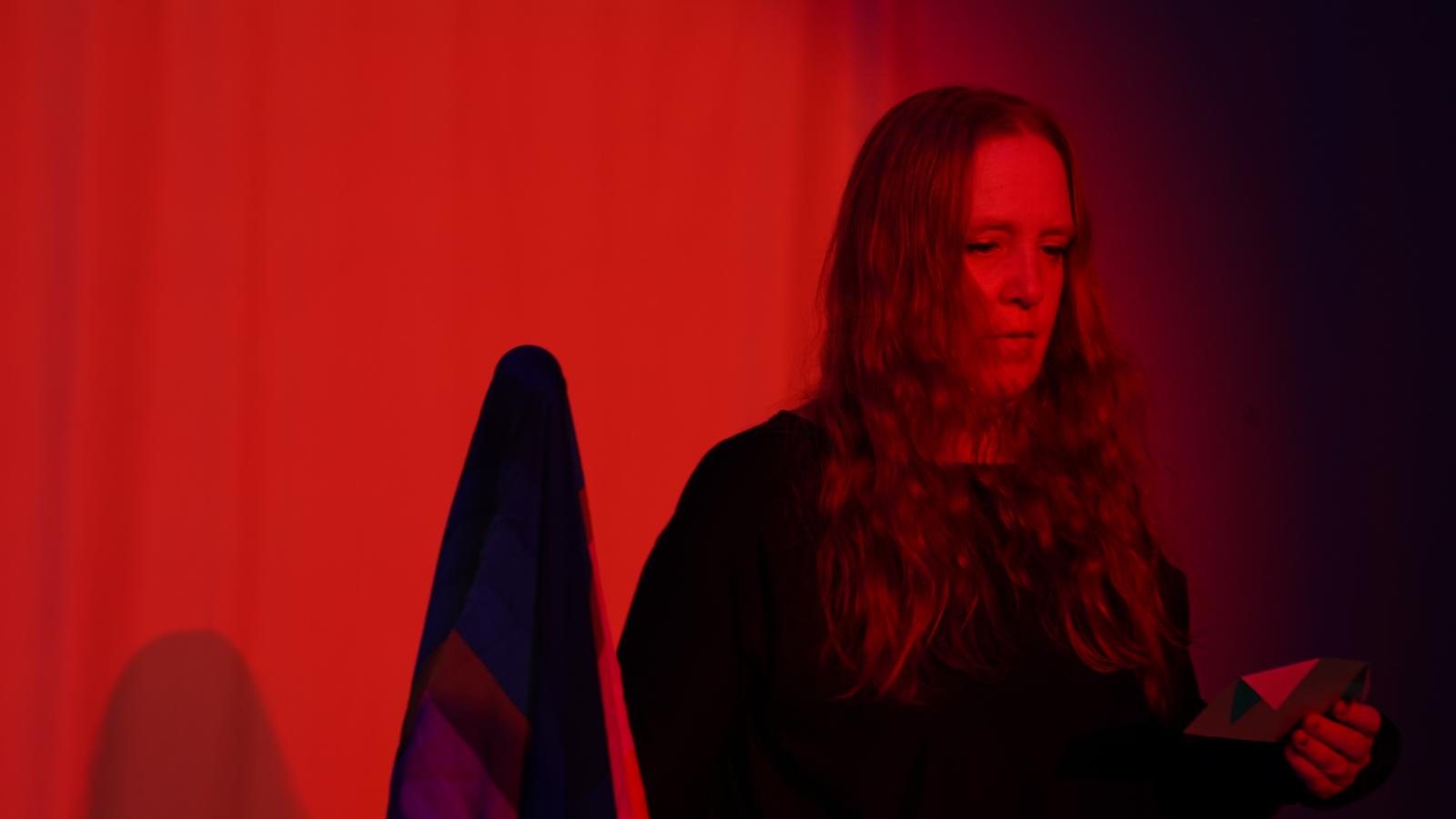Oasis
OASIS is a Mixed Reality Opera developing within the Livable Futures community, a multi-part research and public practice initiative directed by Professor Norah Zuniga Shaw (ACCAD/Dance) since 2016 with support from the Global Arts and Humanities Discovery Themes. OASIS integrates choreographic investigation into geothermal and oasis ecologies with immersive technology, activist participatory theater, improvisation, and the healing arts. The work is being developed in the physical space of the Motion Lab and in Virtual Reality simultaneously with ambisonic sound and an intermedia landscape. VR development includes a collaboration with Jameel Paulin on his research in afro-futurist design and shared interest in immersive environments for healing. Sound is performed, processed, and mixed live by Oded Huberman using custom audio software developed with electronic music composer Marc Ainger (ACCAD/Music). Visual artist
Project Description:
OASIS is the third in a series of performance and technology works created by Professor Zuniga Shaw for Livable Futures. The creative team includes Byron Au Yong, internationally renowned contemporary artist who has composed an improvised song-cycle for OASIS drawing on his experience in Chinese and Korean vocal traditions and Zuniga Shaw’s background in North American folk music and Jewish ritual practices. The work responds directly to grief and loss associated with the pandemic and climate crisis and the need for both recovery and transformative change.
Resisting dominant narratives of disaster and decline, it offers a soft space for turning to toward the issues at hand. Participants are bathed in sound, stars, stories, and sensation in this 90-minute immersive experience for rest and recovery in uncertain times. Warm water flows through the themes of the work but so does mirage and the impermanence and precarity of any site of refuge on the planet today. The literal and figurative metaphors of physical and emotional oases provide fertile ground for the imagination.
OASIS was Initiated during a residency at the Wexner Center for the Arts in March 2022 and is being further developed with residencies at partner institutions in the U.S., Germany, Austria, and Switzerland with grant support from the Greater Columbus Arts Council, Ohio State’s College of Arts and Sciences, and the Global Arts and Humanities Discovery Themes.

Research Questions and Areas of Inquiry:
- Art and Healing: How do the intrinsic practices of performance contribute to directly addressing health inequities? What are the healing properties of ambisonic immersive sound in physical and virtual space? What audience participation tactics support the healing potentials of ambisonic sound installations and intermedia performance?
- Ecology, Technology, and Social Change: What metaphors for human resilience can be developed from understanding oases and other geothermal sites ecologically, visually, sonically, and culturally? Can visual representations of “resilience motions” create resilience or support transformative environments?
- Mixed Reality Performance (VR/AR/MR/XR/IRL): What is live performance in Virtual and Mixed Realities? What new possibilities emerge at the intersection of improvisation, interaction and presence in multiple sites simultaneously? How can performances that incorporate virtual and augmented reality technologies expand the space for impact and inspiration? When does it enhance and when does it take away from the core values of the work? What new potentials do these questions enable?

Project Team:
A Livable Futures project created by Norah Zuniga Shaw and Byron Au Yong
Oded Huberman, intermedia developer, interactive lighting, and performer
Kathryn Nusa Logan, video dramaturg and performer
Dorian Ham, DJ and performer
Marc Ainger, acousmatic and ambisonic sound design and custom software
Sonia Baidya, Lighting design
And participating audience members including technical staff at the Wex, Columbus, OH
Support provided by Lane Czaplinski, Director for Performing Arts, The Wexner Center for the Arts, The Ohio State University Advanced Computing Center for the Arts and Design and Global Arts and Humanities Discovery Themes, and the Greater Columbus Arts Council
Video documentation and editing by Kathryn Nusa Logan with contributions from Katie O'Loughlin
Photography by Seth Moses Miller



